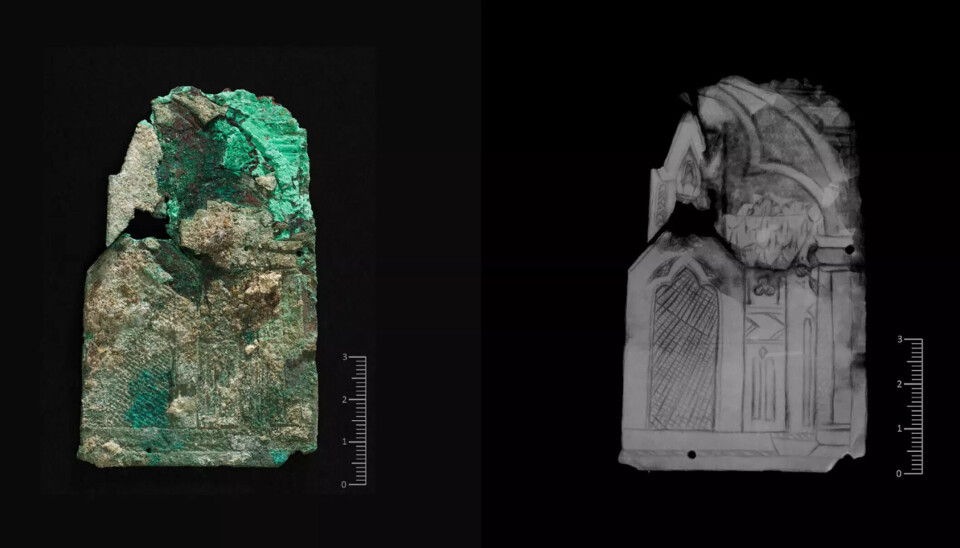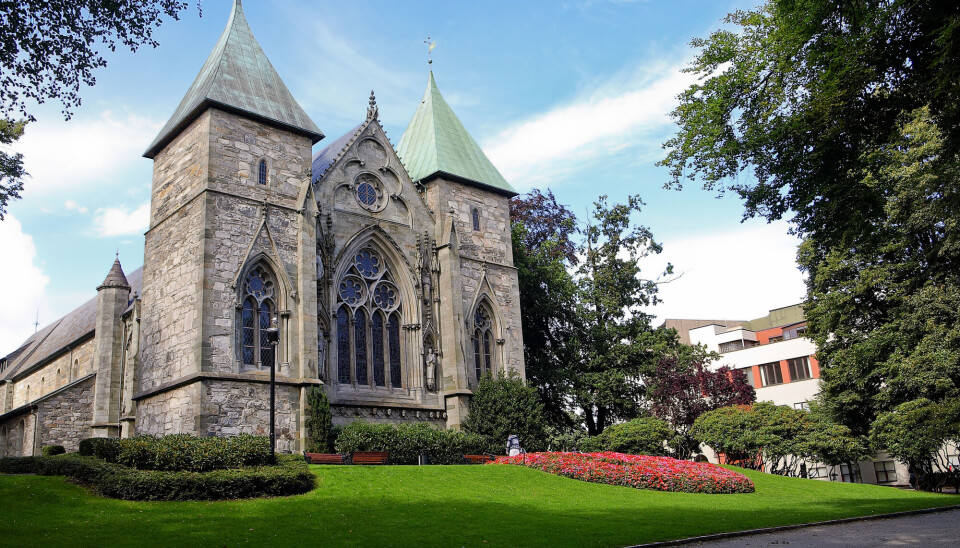THIS CONTENT IS BROUGHT TO YOU BY the University of Stavanger - read more

Cathedral's lost treasures uncovered
For 500 years, it was believed that everything was sent to Denmark and melted down during the Reformation. Now, it appears that the reliquary of Stavanger's patron saint never left the cathedral.
On 2 July 1517, St. Swithun’s Day, Stavanger's last Catholic bishop, Hoskuld, entered the cathedral's north sacristy with four trusted men.
He wished to create a list of all the cathedral's relics in the presence of witnesses. Most notably, the reliquary containing a fragment of an arm bone of the city's patron saint, St. Swithun of Winchester.
507 years later, archaeologists from the University of Stavanger's Museum of Archaeology may have found the remains of the reliquary hidden in the cellar at the base of the Stavanger Cathedral’s north tower.

X-ray examinations
The find consists of a gilded copper panel measuring five by ten centimetres. It has small nail holes along the edges which indicate that it has been attached to a larger, wooden object.
Associated with this panel, archaeologists also recovered a gilded silver medallion, decorated with an animal motif and bearing similar nail holes, and several decorative glass ornaments.
"We were very surprised when we carried out an X-ray examination of the copper plate. The image clearly reveals a church building with a tower and roof, columns and windows," conservator Bettina Ebert says.
According to the archaeologists, all these finds may have belonged to the reliquary of St. Swithun.
A sensational find
The excavation was carried out by a research team from the Musuem of Archaeology, led by Sean Denham. He was accompanied by researchers Margareth Hana Buer and Bettina Ebert.
"For the church and the city, this find is a sensation," Denham says.
According to historical sources, Stavanger's first bishop, an Englishman named Reinald, brought the arm bone of St. Swithun with him, perhaps as early as the year 1112. The cathedral was dedicated to St. Swithun when it was completed around the year 1125.
The relic was then placed on the high altar.
"The arm bone of St. Swithun was valuable and would have been carefully wrapped in beautiful cloth and then placed in a gold casket with precious stones in beautiful colours. There were several such reliquary boxes, shaped like houses, in Norway in the Middle Ages, but few have been preserved," senior researcher Buer explains.

The Reformation sought to eradicate all Catholic 'superstition'. This included the removal and destruction of all treasures in the cathedral.
The results of this most recent excavation suggest to researchers that a number of these treasures were hidden in the cellar in order to save them from destruction.
Found by chance
It was the chance discovery of a 700-year-old ivory figurine of Melchior, one of the three wise men, in the cellar last year that led to the research excavation. This has resulted in a number of unique discoveries that excite the researchers.
"In terms of quantity and significance, the finds in the basement have exceeded all expectations and reflect more than 1,000 years of Stavanger's history. They demonstrate the cathedral and city’s clerical wealth and contact with Rome in a way not previously seen in the archaeological material," Denham says.
Visitors will be able to see these treasures and more in the museum’s 2025 exhibition celebrating the cathedral’s 900th anniversary.
More finds from the bishop's treasure chest:

This content is paid for and presented by the University of Stavanger
This content is created by the University of Stavanger's communication staff, who use this platform to communicate science and share results from research with the public. The University of Stavanger is one of more than 80 owners of ScienceNorway.no. Read more here.
More content from the University of Stavanger:
-
How the Vikings protected themselves from attacks
-
Like tuning forks in space: A final pure tone reveals the mysterious interior of neutron stars
-
Could scented books encourage more kids to read?
-
Artificial intelligence could improve the quality of life for more patients following a stroke
-
Norwegian researchers can contribute to changing the Big Bang theory
-
Archaeologists may have found a marketplace from the Viking Age













































